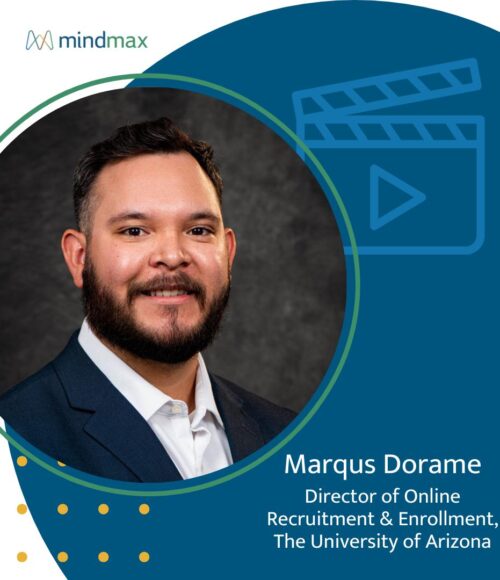Why Disqualifying Students in Your Higher Education Enrollment Funnel Is a Good Thing

Why Disqualifying Students in Your Higher Education Enrollment Funnel Is a Good Thing
“What are you not going to do?”
Most good coaches or time management programs encourage business leaders to answer this key question. The reason is simple: every individual and every organization has a finite amount of time and resources to apply to achieve their goals, so prioritization is essential. You simply cannot afford to chase bad opportunities at the expense of better ones.
Higher education institutions looking to grow enrollments can benefit from this advice. Thanks to digital marketing, it’s easier than ever for schools to attract the attention of many people who might be interested in their programs. But not all leads are good leads. And when enrollment teams have to sift through too many low-quality leads manually, that’s not an ideal use of their limited time and resources.
The Case for Driving Less but Better Traffic to You Website
There’s an assumption in higher education that growing enrollments is directly tied to having a high volume of leads at the top of the funnel. However, to justify bringing in as many leads as possible, schools must have sophisticated automation capabilities and business processes in place to handle a high lead volume efficiently.
Without customer relationship management (CRM) and marketing automation systems, enrollment management teams spend significant time and resources qualifying and disqualifying leads.
In these cases, we advise schools to be judicious with their outbound marketing efforts and target only the highest-quality potential leads so that they can dedicate their resources more strategically.
Using Automation to Efficiently Qualify and Disqualify Leads
Using automation at the earliest stage possible is an excellent alternative to manually qualifying and disqualifying leads, but many schools still lack this capability.
With robust CRM and marketing automation solutions, schools can drive a high volume of traffic to their websites because their websites leverage automation to determine if someone is a high or low-quality visitor, taking some of the pressure off enrollment management teams.
After identifying the higher-quality visitors, schools can invest more resources at the top of the funnel to retargeting and messaging those individuals.
Lead verification is essential
Even with automation, some leads will still need to be sifted out. Once someone becomes a lead by filling out a form, there are different tiers, so lead verification is an essential part of the process. For example, there’s a difference between leads who autofill a form on a social media platform and those who manually complete a more comprehensive form.
When schools don’t verify their leads, they risk large email unsubscribe rates, which can hurt their sender status. They also waste time and resources on outbound calling and 1:1 messaging bad leads.
4 Qualifiers for Evaluating Interest in a Higher Education Program
How can schools determine if a lead is high-quality? When a lead meets these four criteria, they’re worth all the time and resources you can apply to help them enroll in your program:
- Motivation. If a person doesn’t remember filling out the form or which program they were researching, that’s not very promising. However, if they can talk about their interest in the program in relation to what they’re trying to accomplish in their life (e.g., earning a certification to advance in their career), their motivation is high.
- Prerequisites. Most programs have prerequisites. If, for instance, a person is interested in a graduate program, but they don’t have a bachelor’s degree, they won’t be able to enroll.
- Funding. Does the person have the funds to pay for the program themselves, or can they access funds through a tuition assistance program or another resource?
- Time. This final qualifier is, in our opinion, the most important one. If a person is working full-time, a 25-hour-per-week program might not be feasible at the moment. Through conversations with prospective students, MindMax’s enrollment services team helps to set realistic expectations about what’s possible.
The gray area of qualifying and disqualifying leads
Qualifying and disqualifying leads isn’t always entirely straightforward. In some cases, a prospective student might not be a qualified lead right away, but we still wouldn’t want to disqualify them outright.
Let’s say a prospective student wants to enroll in a program. They have the motivation, the prerequisites, and the funding—but they can’t make the time for it this semester. They could, however, enroll next fall.
Instead of disqualifying that person, we would recalibrate our marketing efforts. We’d stop messaging them about spring enrollment and place them in a different engagement cycle. Then, we’d send them the right messaging to maintain engagement and contact in preparation for fall enrollment.
Implement Marketing Automation and CRM Solutions to Grow Enrollments
Interested in leveraging the power of marketing automation and CRM solutions to grow enrollments at your school? MindMax can help. Contact us today to learn more.
Related Ideas
Melissa Maybury Lubin Wants Higher Ed to Be Affordable, Accessible, and Achievable

Marqus Dorame Advocates for Student-First Recruitment
